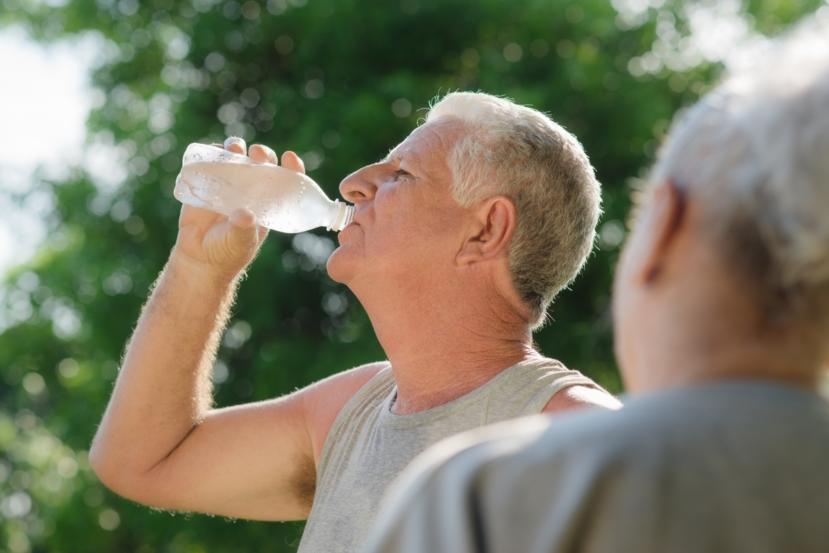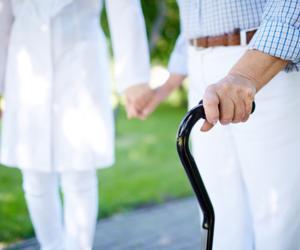Parkinson's: Tips From a Professional Occupational Therapist

Once the diagnosis of Parkinson's has been dropped on a person, it is natural to feel devastated. Modern medicine can help a lot but still, it cannot stop the progression of the disease. However, with lifestyle changes a person can delay the progression of symptoms, and continue to live independently and close to normal life for longer. In all chronic diseases, the trick is being proactive and taking control of your ailment. And being armed with knowledge. Don’t waste your time in asking why me, as what causes Parkinson's is not fully understood even by the best of health professionals. What we know is that Parkinson's is caused by genetic and environmental factors. Among environmental factors, two elements are well recognized, that is trauma to the brain (remember Mohammed Ali), or long-term exposure to certain toxic elements like pesticides used in farming (1).
It is important to know a few things about Parkinson's. Symptoms of this disease vary a lot between individuals. Most people who don't know much about the disease, associate Parkinson's with body tremors while resting, even though that symptom is only in 70% of cases. More common symptoms are the slowness of movement and muscular rigidity. This disease is characterized by various problems of physical movement and mental issues like dementia, depression, anxiety, fatigue, and insomnia. Often these nonphysical problems are under diagnosed or even missed by the health professionals (2). It means that any proactive plan for dealing with this disease must consider the importance of psychological well-being. Before we touch the topic of living well with Parkinson's, let us discuss two important, and proven methods of delaying the symptoms. They are balanced diet and exercise.
Diet and Parkinson's
There is no specific diet for Parkinson's, rather stress is on maintaining an optimal weight through the balanced diet (3). In Parkinson's, being both underweight or overweight are equally common and can worsen symptoms. There are a few important things to include in your diet.
Dietary fiber and fluid
Well, constipation is often the earliest sign of Parkinson's, and many patients have the problem of constipation several years before being diagnosed with it. It is always better to manage constipation with dietary measures rather than getting used to medications. The diet of someone suffering from constipation must be rich in fiber, and fluid intake must be increased to keep stool soft. Products like oats, legumes, beans, lentils, whole wheat, and brown rice are an excellent source of dietary fiber. To increase the fiber content, fruits are best eaten with the outer skin. Make a measurable plan to increase daily fluid uptake; you can start drinking water several times a day at a fixed time, like in the morning.
Antioxidants
They are known to be good for the health of nerves, by slowing down or preventing their damage. Berries like cranberries and wild blue berries are excellent sources of antioxidants. Many common fruits and vegetables like tomatoes, carrots, pomegranate, pumpkin seeds, broccoli and grapes are rich sources too.
Co-enzyme Q10
It is thought to be neuroprotective, and is available as a food supplement. However, it is always better to get it through natural resources, by making them part of your diet. Foods like soy oil, fish oil, beef, and peanuts are a rich source of it (4).
Dietary interventions for special needs
Some people may require specific dietary interventions to counter their health problems. Those suffering from the problem of swallowing may need artificial feeding. Osteoporosis is a common problem associated with Parkinson's. The person may need to supplement the diet with calcium and vitamin D. Orthostatic hypotension (feeling dizzy and weak on standing, or even “blacking out”) is another common problem; it is felt more after eating food when the flow of blood towards the intestines increases. Thus, avoid taking heavy meals at once; take lots of fluids with meals; sometimes an increase in salt intake may also help; and avoid taking alcohol.
Exercise for neuroprotection and brain plasticity
There is now enough scientific evidence to prove the effectiveness of exercise in improving the quality of life in people living with Parkinson's. It improves physical functioning, muscular strength, balance, and gait, although benefits in fall prevention and depression are less pronounced (5). Exercise is usually more effective and beneficial when done under the instruction of qualified professionals. However, the question is; what kind of exercise would be more beneficial? One has to understand that for maximum benefit in Parkinson's, exercise has to be more vigorous and regular, as one wants to improve the physical limits and capabilities. For improving overall health, cardio conditioning, neuroprotection and plasticity, improving muscular strength, flexibility and balance, following are the recommendations:
- Moderate to vigorous aerobic exercise: start with 20 minutes done 3 times a week, and increase it to 5 times a week to be done for 30 minutes.
- Muscle strengthening exercise: done twice a week with rest days in between, should have 8-10 exercises covering all the major muscles. Each exercise should have 10-15 reps at least.
- 8-10 flexibility exercises: covering all the main muscle groups, with 2-4 reps and holding for 15-30 seconds during each repetition. Start with 2-3 days a week, later increasing it to daily.
- Balance training exercises.
Research shows that very few people follow all these criteria, and often fail to get the results.
Strategies for improving movements and self-efficiency
During our day to day life, we are used to multitasking. On average any person is doing 4-5 different tasks at a time. It could be like typing (along with thinking and reading, involving brisk and complex finger movements), or having a walk with a friend (thinking, talking, or even having snacks). In the normal brain, all these activities happen automatically in a smooth and quick flow. However, in Parkinson's, these usual tasks become difficult and slow due to the failure of so called “autopilot” (6). Thus one has to learn to do:
All the tasks more consciously, which normal people can do unconsciously: Doing these tasks with thinking and planning, by-passes the lower brain, which is affected by Parkinson's.
Avoid multitasking, and try to do one task at a time: Thus it would be better to sit down while dressing or swallowing tablets, most people with Parkinson's fall due to this simple sounding multitasking.
Use mental and sensory instruction set to do all the tasks: As they bypass the area of the brain affected by Parkinson's.
- Mental rehearsal – Visualize the work in complete details before doing it. Imagine and visualize the perfect performance of the task.
- Internal dialogue – Talking to yourself silently while performing the tasks, like I need to take bigger steps, hold the glass of water carefully. Commenting the tasks aloud may help further.
- Changing environment layout – For example, removing the coffee table which disturbs you in reaching the sofa, may be helpful. Preplan your movements when going to some new place.
- Floor markers – In the form of a sticker or colorful tape that contrasts with the floor. Especially at places where a person finds difficult to move or turn. Visual clues help a lot, that is why climbing a staircase is rarely a problem for people suffering from Parkinson's.
- Cue cards – Prepare several cue cards with the instruction of day to day activities, get them printed, laminated and hang at places where they are needed most. An example of such cue card could be instruction for dressing up: To fasten buttons - sit down, and say to yourself…grip button.
All these strategies can be used in improving mobility, preventing falls, fatigue management, doing all the day-to-day tasks efficiently, resulting in better self-efficiency.
References
1. Gorell JM, Johnson CC, Rybicki BA, Peterson EL, Richardson RJ. The risk of Parkinson’s disease with exposure to pesticides, farming, well water, and rural living. Neurology. 1998 May 1;50(5):1346–50.
2. Shulman LM, Taback RL, Rabinstein AA, Weiner WJ. Non-recognition of depression and other non-motor symptoms in Parkinson’s disease. Parkinsonism RelatDisord. 2002 Jan 1;8(3):193–7.
3. Best practice guidelines for dietitians on the management of Parkinson’s. [cited 2017 Jul 30]. Available from: https://www.parkinsons.org.uk/professionals/resources/best-practice-guidelines-dietitians-management-parkinsons
4. Yang X, Zhang Y, Xu H, Luo X, Yu J, Liu J, et al. Neuroprotection of Coenzyme Q10 in Neurodegenerative Diseases. Curr Top Med Chem. 2016;16(8):858–66.
5. Goodwin VA, Richards SH, Taylor RS, Taylor AH, Campbell JL. The effectiveness of exercise interventions for people with Parkinson’s disease: A systematic review and meta-analysis. MovDisord. 2008 Apr 15;23(5):631–40.
6. Aragon A, Kings J. Occupational therapy for people with Parkinson’s: Best practice guidelines. College of Occupational Therapists; 2010.
















